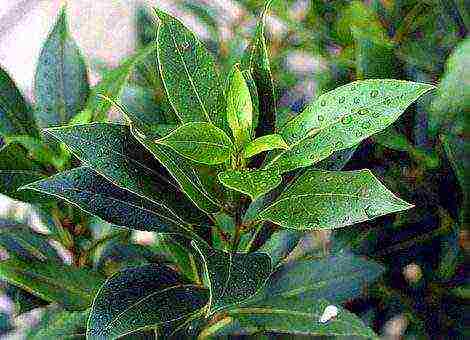Content

Once, as an advertisement for a flower campaign, I sent a magazine with an offer to order seeds of a variety of sorts from them. At that moment I was most impressed by the cotton plant, for some reason the idea of growing a spinning plant on my windowsill seemed extremely tempting. In general, I did not hesitate for a long time, I ordered myself a couple of bags of seeds.
The cotton plant (Gossypium) comes from the Malvaceae family, there are about a hundred species in nature, among which there are herbaceous and woody, perennial and annuals. The variety of cotton species is due to its variability, a change in the place of growth and the ability to cross-pollinate leads to the fact that more and more new varieties appear.
The habitat is extensive, it grows in the tropics and subtropics of Asia, Africa, America and even Australia. Plant height varies from 50 cm to 1 m.

The seeds are wrapped in a damp cloth moistened with epin for several days.
After a few days, when the sprouts hatch, they can be planted in a small container.
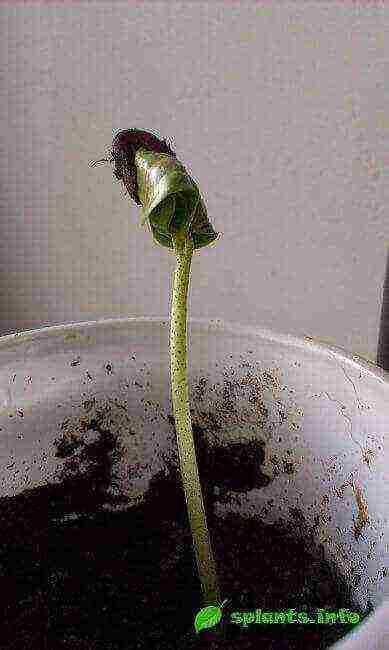
Don't forget about additional lighting and temperature conditions

The flower blooms for one day, emits a delicate pleasant aroma

Oval box ripens
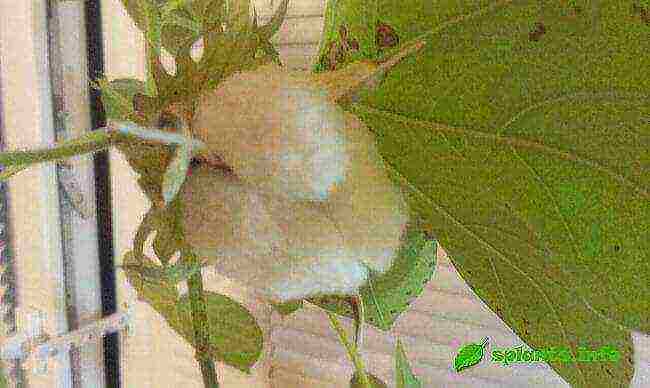
After about 1.5 months, the capsule opens, the seeds are hidden in snow-white lint (cotton fluff)
Growing, in principle, is not difficult. But there are a few things to keep in mind:
The timing of sowing seeds. Sow as early as possible - no later than February. Delay can lead to the fact that the flowering and ripening of seeds will occur in late autumn.
Temperature. Cotton plant prefers to grow at a temperature not lower than +20
O
C. Seeds at this temperature give the best similarity. As the seedlings grow, they can be gradually accustomed to lower temperatures.
Lighting. Choose a well-lit spot on a windowsill for your cotton plant. It should also be well ventilated. If your place is dark, be sure to highlight it.
Humidity should be moderate. Watering is plentiful, but make sure that the water does not stagnate.
Fertilizer. Twice a week during vegetative and generative growth. Apply complex feeding.
Soil and replanting. Prepare the substrate nutritious, rich in humus. Acidity about 6 Ph. Don't forget about drainage. The roots of the plant are long, so choose a deep pot. They are transplanted as they grow, the transfer method is preferable.
Cotton is susceptible to a wide variety of pests. Almost half of the cotton growers' crops die every year on the plantations. To prevent our little things from adding to this sad statistics, carry out prevention, at the first suspicion of malaise, start fighting diseases and pests.
My, for example, cotton plant managed to pick up somewhere
septoria
... So far, the fight has been unsuccessful, but I do not lose hope.
 Most of the wardrobe items we use regularly are made from cotton. It is strong, durable, and most importantly, it allows our skin to breathe.
Most of the wardrobe items we use regularly are made from cotton. It is strong, durable, and most importantly, it allows our skin to breathe.
The thread from which this fabric is woven originated inside the fruit of a small heat-loving plant. The cotton plant looks like a small bush and grows in Asia, Africa or America. The flowers of the plant are white or light cream.
What types of cotton are there?
There are several types:
- herbaceous cotton;
- tree cotton;
- ordinary cotton;
- Peruvian cotton.
The quality of the material depends on the type. The thinnest and longest fiber is obtained from Peruvian cotton. This variety is valued more than anyone else, because more than sixteen kilometers of material are obtained from one ton of such cotton. And, for example, from ordinary cotton, only about nine.
Cotton is divided according to the length of the fiber:
- short-fiber (from 27 mm);
- medium-fiber (from 30 to 35 mm);
- long-fiber (from 35 to 50 mm).
Harvesting and processing
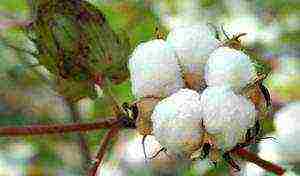 Cotton is a short annual plant with white flowers and a strong root system. This plant has a straight stem, branching towards the top. Cotton blooms from early June to autumn. The bush is very moody and requires a lot of heat and moisture. Cotton grows well and develops at high temperatures - more than 30 degrees... At the same time, cotton bushes need to be watered regularly, especially during the flowering period.
Cotton is a short annual plant with white flowers and a strong root system. This plant has a straight stem, branching towards the top. Cotton blooms from early June to autumn. The bush is very moody and requires a lot of heat and moisture. Cotton grows well and develops at high temperatures - more than 30 degrees... At the same time, cotton bushes need to be watered regularly, especially during the flowering period.
Before sowing, the soil must be fertilized. They start picking cotton only when the so-called box bursts and fluffy fiber appears from it. All this is collected together with fluff and seeds. The unprocessed mass is called "raw cotton".
Useful properties and use of cotton as raw material
Since picking cotton by hand under the scorching sun is a very time consuming process, cotton pickers are used. They clean the untreated mass of debris, leaves, branches and seeds. Leaves are used for making citric and malic acid... Cotton fiber is a raw material for the production of gunpowder. In regions of Asia, dry stems are used as fuel.
Among other things, the plant is a melliferous plant - honey of a light shade, after crystallization it becomes white. It has a peculiar taste and pleasant smell.
This plant is used almost everywhere: for the production of paper due to its high cellulose content, and for the production of plastics, and even for the production of explosives. The seeds are also not disposed of - flaxseed oil is squeezed out of them. Oil is used for a variety of purposes: added to food, made cosmetics, medicines, made soap, candles, technically oils, and more.
Cotton is also valuable for what it contains many useful substances:
- essential oils;
- resinous substances;
- vitamins; minerals;
- organically acid.
The plant is used in the treatment of diseases of the reproductive system, as well as for toxicosis in pregnant women. Cotton plant also used for herpes, lichen, some viral diseases and a lack of vitamin E due to the high content of this vitamin in the composition. Cotton bark is considered a natural hemostatic agent.
Growing cotton at home
Plant care
 As mentioned above, in order to grow cotton, you need to carefully care for the bushes. The place where the cotton grows should be warm and protected from drafts. It is important to remember that the bush will simply die from frost or a sharp drop in temperature. Watered cotton as the soil dries up, and fertilize about once a month - you can use a regular houseplant mixture.
As mentioned above, in order to grow cotton, you need to carefully care for the bushes. The place where the cotton grows should be warm and protected from drafts. It is important to remember that the bush will simply die from frost or a sharp drop in temperature. Watered cotton as the soil dries up, and fertilize about once a month - you can use a regular houseplant mixture.
Reproduction of cotton bushes
The plant propagates by seeds. It is necessary to sow cotton as early as possible - even in winter. However, it can also be planted in spring - in April or May. The seed is deepened in the soil by about 1-1.5 centimeters. If the temperature in the room is high, then the first shoots will appear within a few days. During this period, they need to be watered and illuminated abundantly. It is better not to put the seedlings on the windowsill, as the bushes may die due to drafts.
When the plants reach a height of more than 10 centimeters, they are transplanted. Choose spacious pots, considering the fact that the cotton will remain in this container until the fall. It is important to remember that the root of a cotton plant can reach more than 30 centimeters and it will be cramped in a small pot.In about two months, the bushes will begin to bloom, forming beautiful yellow flowers. The plant itself, if not shortened, reaches a height of more than 60 centimeters.
Since cotton ripens unevenly, therefore, it has to be picked gradually - as soon as it is ready. Leaves are harvested in advance - they are considered can be a breeding ground for bacteria... During this period, it is necessary to maintain optimal humidity: it is not worth pouring the plant, otherwise the flowers will begin to fall off. There are many photos and videos describing cotton growing at home. From the photo, we can conclude which containers to choose for planting, and videos will demonstrate exactly how to fertilize the bushes, watering and transplanting into other pots.
Cotton plant
Already in the 8th century, the Chinese were growing cotton as an ornamental plant, admiring its buds, which in the process of flowering change color from white and yellow to pink and purple, and fluffy "caps" that appear after them. It is not a fact that you can grow cotton for fabric production on your own, but an amazing plant will definitely decorate your apartment or garden plot.
- liquid mixture from pests.
Sponsored by the placement of P & G articles on "How to grow cotton" How to wash a Teflon tablecloth How to make Japanese curtains How to bleach cotton
Cotton seeds are quite difficult to find in flower shops. However, if you find yourself in Central Asia (or your relatives and friends live there), getting seeds is not a problem. They should be kept in a wet cloth for several days, and then planted in a large container - preferably in a deep box, since the cotton roots go into the ground to a depth of at least 30 cm.Depending on the type, the cotton bush grows up to 0.5 - 3 meters and forms a large number of side branches.
Cotton should be placed on the windowsill, as this plant needs a lot of light. It is best to plant cotton in the spring. Flowers similar to mallow will grow rapidly and will bloom by autumn. In the second year, cotton will open in spring. A few weeks after flowering, seed bolls “decorated” with silky cotton will appear on the tough woody stems. Depending on the variety and growing conditions, there may be short and long hairs on a cotton boll, or only long ones.
On plantations, cotton grows in dry, hot climates and requires a lot of water. At home, it must be watered as soon as the soil begins to dry out (especially abundantly - during flowering). Fertilizers can be used the same as for most indoor plants. In general, cotton adapts easily to soil conditions.
Cotton diseases most often appear in the summer. To combat fungi and pests (spider mites, green gadflies, cotton aphids, and others), you can use a mixture of garlic, pepper and soap. Cotton quietly winters on the window.
It is worth trying to plant cotton on the site. It is recommended to place it in a place protected from the wind in well-loosened soil "in the company" with peanuts and similar crops, which allows the soil to saturate with nitrogen and other nutrients. It is necessary to remove weeds in time and periodically cover the cotton with plastic wrap.
Other related news:
In order to make it easier to decide on the selection of the thread number for the type of fabric, it is recommended to use some of the tips suggested in the article. So, for light fabrics, such as: voile, crepe de chine, cambric, tights, crepe georgette, it is necessary to use fine cotton threads (cotton),
Sleeping on beautiful bed linen is very pleasant. It also plays a huge role in the overall interior of the bedroom. As you know, one has only to buy a new set of beautiful cotton bed linen, the bedroom is immediately transformed. Particular attention should be paid to ironing this material. Sponsor
The natural properties of cotton are widely used in everyday life.Clothes, linen, and household items are made from cotton fiber. Violation of the temperature regime during washing and improper drying of cotton products leads to their deformation. Severely dry jeans or jersey
Cotton fabric is a common natural material. Products made from it have the properties of permeating air and absorbing moisture well, which makes you feel comfortable in them, and bed linen made of chintz, calico and poplin have a beneficial effect on sleep. But cotton things get dirty quickly and
It often happens that cotton items lose their original color and brightness after several washes. Therefore, it occurs to many to repaint a thing in a different color or add juiciness to the coloring. Natural dyes, which are extracted from the roots of plants and leaves, have been displaced from
Cotton is the seed of an annual cotton plant that is cultivated primarily in Central Asia. Since ancient times, starting from the 5th century AD, fiber has been widely used in textiles, yarn was spun from it, knitted, and sewn. You can distinguish organic fiber from synthetics
Aquilegia (Catchment) refers to perennial plants of the buttercup family. The flower got its second name because it can collect full corollas of water during the rain. In gardens, hybrid aquilegia is most often bred. This plant reaches a height of 100 cm and is prized for its large flowers.
Cotton is the oldest natural fiber used for different purposes depending on the culture and era of a particular country. They learned to process and receive cotton fiber since the time of the construction of the Egyptian pyramids. Its scope is very wide. Sponsored by placing P&G Articles on
Every housewife is familiar with the situation when even the highest quality powders cannot cope with removing stains on cotton fabrics. Often, light underwear loses its dazzling whiteness, turns yellow and becomes grayish. To properly bleach this or that thing, you need to know some rules and techniques,
The correct choice of yarn largely determines the appearance of your future product. This choice depends on how you knit - crochet, knitting, by car or some other, as well as on the type of product and your personal preferences. Sponsored by the placement of P & G articles on "How to choose a yarn

Once, as an advertisement for a flower campaign, I sent a magazine with an offer to order seeds of a variety of sorts from them. At that moment I was most impressed by the cotton plant, for some reason the idea of growing a spinning plant on my windowsill seemed extremely tempting. In general, I did not hesitate for a long time, I ordered myself a couple of bags of seeds.

The seeds are wrapped in a damp cloth moistened with epin for several days.
After a few days, when the sprouts hatch, they can be planted in a small container.

Don't forget about additional lighting and temperature conditions

The flower blooms for one day, emits a delicate pleasant aroma

Oval box ripens

After about 1.5 months, the capsule opens, the seeds are hidden in snow-white lint (cotton fluff)
The timing of sowing seeds. Sow as early as possible - no later than February. Delay can lead to the fact that the flowering and ripening of seeds will occur in late autumn.
Temperature. Cotton plant prefers to grow at temperatures not lower than +20 o C. Seeds at this temperature give the best similarity. As the seedlings grow, they can be gradually accustomed to lower temperatures.
No, I checked it in several browsers, everything is displayed fine. Take a screenshot, if not difficult, by email. mail and browser what.
Diana, this is problematic, However, if you live in the south and you can plant a smelt in the ground, and you can't turn around in an avocado pot - it's a watchtower) But let's hold our fingers for you, all of a sudden.
Olga, thank you, your praise inspires us)
- - deep box,
- - polyethylene film,
- - fertilizers,
- - liquid mixture from pests.
- Note "Let's grow cotton on the window"
- growing cotton
It is recommended to keep the seed in the refrigerator for 2-3 weeks. Before planting, the garlic is dipped in a weak solution of potassium permanganate (take 1 g of the drug per 1 liter of water) or saline solution (for 7-8 liters of water, you will need 3 tablespoons of salt). And 8-10 hours before planting, the garlic bulbs are warmed up in a well-ventilated room at a temperature of 40 ° C - 41 ° C.
Garlic should not be planted on low-lying soils, where melt water can accumulate in spring, and on highlands, where strong winds blow off snow in winter, which makes garlic more likely to freeze.
On the site selected for planting garlic, the ground is dug at the level of a bayonet shovel, after which the soil is leveled. The site is limited by bumpers: so the moisture necessary for the growth of garlic will be better preserved. Then the soil is disinfected: the soil is treated with saline (3 tablespoons of salt are taken for 9-10 liters of water).
The heads of garlic are divided into cloves, then each such clove is inserted into the ground at a distance of 8-10 cm from each other. Sprinkle the bed with sand or sawdust on top. Sprinkle over the garlic and sprinkle it with earth (if the garlic is planted in spring, this is optional). Planting depth of spring garlic is 4-6 cm, winter garlic - 8-9 cm.
For garlic, it is recommended to use mineral and organic fertilizers. The plot on which the garlic was planted in the fall is fertilized with compost or humus (consumption: 6-7 kg per 1 sq. M). But you should not fertilize the plant with fresh manure, since such feeding will lead to a powerful growth of the vegetative part and a decrease in yield. In addition, garlic is responsive to potash and phosphate fertilizers: these elements increase the plant's winter hardiness. In the spring, after the appearance of the first shoots, the soil is fed with mineral fertilizers: to treat a plot of 10 square meters, you will need 90-100 g of superphosphate, 60 g of ammonium nitrate and 55-60 g of potassium sulfate. The second spring feeding is performed 30 days after the first (the dosage is the same).
Signs of maturity of garlic: a dense shell forms around the head, the leaves turn yellow.
Although garlic does not tolerate waterlogging well, it must be constantly watered during the growing season. The plant is watered once a week with soil impregnation to a depth of 30 cm. Watering is stopped 27-30 days before harvesting.
 The cotton plant (Latin Gossypium) belongs to the Malvov family (Latin Malvaceae). In natural conditions, it grows in the tropics and subtropics. In total, about 50 species of these plants are known.
The cotton plant (Latin Gossypium) belongs to the Malvov family (Latin Malvaceae). In natural conditions, it grows in the tropics and subtropics. In total, about 50 species of these plants are known.
After flowering, seed pods are formed. In addition to seeds, white fluffy fibers grow in them. Cotton fabrics and medical cotton wool are made from these fibers.
The cotton plant was already known to the ancient Egyptians. It was brought to Europe by the Arabs in the 10th century, and the mass production of cotton fabric began only in the 14th century. Due to its unusual appearance and beautiful flowers, it is also grown as a houseplant.
Care
There are various species, including annuals and perennials. In indoor conditions, annuals are most often grown. This plant should be grown in a bright, sunny and draft-free place. It can also be kept in an open-air garden, but in this case it will be necessary to use a shelter from the rain.

The cotton plant tolerates the summer heat well, but it dies during the first frost. Water the plant as the earthen clod dries out in the pot. In early spring, it needs to be fed every two weeks with fertilizer for flowering plants.
Reproduction
Cotton is propagated only by seeds. Sow them as early as possible, around January or February. It is necessary to deepen them into the soil by about 1 cm. Be sure to cover them with glass from above. Germinate them in a bright place at a temperature of 20 ° C to 22 ° C.
The first shoots appear within a few days. During this period, they need to provide good humidity.It is not recommended to spray with water from a sprayer, as delicate stems can be damaged. It is best to moisten the soil between the rows of seedlings with a medical syringe or pipette.
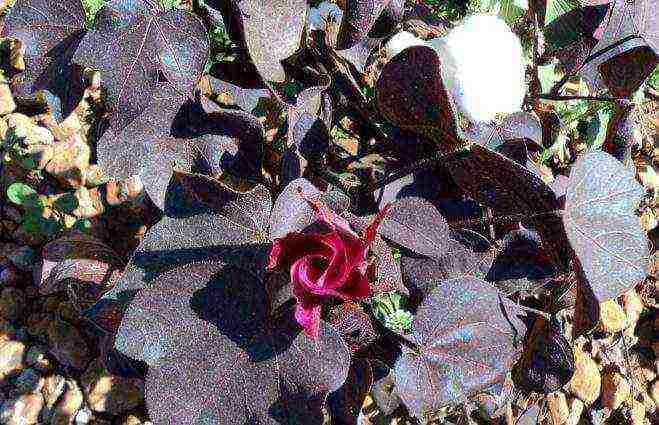
When the plants become cramped, they need to be cut into a larger container. When they reach 10 cm in height, they are seated in pots with a diameter of 15 cm. They remain in them until the end of their life, that is, until autumn. Cotton usually blooms 8 weeks after germination.


